In 2016, legendary game designer Mark Rosewater (Magic: the Gathering) published an article on what he calls “the Storm Scale”. Simply put, it is the likeliness for any one given mechanic to return in a Standard-legal set. The idea originated by many people asking him about this on his blog, so he decided to turn it into a full-fledged scale, which since then has become a prominent feature of modern design philosophies, especially in regard to card games in particular. It should be noted that this concept has existed for well over 10 years now, however only recently it was written about in great detail by the author himself – expanding, improving and elaborating on the original concept.
Caveats
Before we move on, we have to mention a few things. Like Rosewater states in the inaugural post, the scale is very subjective because it’s based on his own opinion on the subject. Here are some things I’d like to get out of the way for the rest of the article:
- The scale is in flux. We are constantly learning and evolving with the game itself. Through iteration and continuing to develop our methods, we might find other metrics and systems that help us better evaluate mechanics and be more accurate in the future. Additionally, the designers themselves are always looking to improve on the game and this can lead to internal reevaluation of priorities. This will directly affect this scale, but we will adapt accordingly.
- The scale is mostly my opinion. While it’s based on deep knowledge about game design, Hearthstone and it’s mechanics, evaluation criteria and comments from the rap legend himself, we are only human and this scale is how I would construct it.
- Not everything is going to fit right in. Despite what you might read on reddit or on the forums, the game is actually fairly consistent overall. Still, there are many outliers even among the core mechanics (read: those that have been keyworded) and they won’t fit into our criteria as easily.
- I‘m neither on the design team nor perfect. As previously stated, in a perfect world this work would be done by the game’s own designers. Sometimes mine and their opinions might differ and I might make an error, but mostly I’m here to provide structure and basis for further analysis, based on the criteria below:
Adapting the System to Hearthstone
Unlike MTG, for which the original concept was developed, Hearthstone is a relatively new game. It has been out for about 4 years now, depending on what you count as release (first playable versions, open beta, actual official release, etc.) but it’s still very young in development cycles and to this day feels like it’s yet discovering and exploring its identity. It is very hard to pinpoint the degree to which the internal inflation of power within the game has already hit the intended power curve, passed it or hasn’t reached it yet. For all we know, the Basic and Classic sets could have started way below it, in order to have plenty of room for growth; or right on point, serving as a guideline of what the power level should remain throughout the game’s life cycle, barring the inevitable inflation that naturally occurs within all games.
Because it’s so young, it makes it very hard for Hearthstone to have underlying problems such as incredibly broken mechanics yet. Aside from a couple of outliers, every single mechanic right now has a very big chance of coming back because design space isn’t very limited yet. So, when we talk about levels of the Hearthstorm Scale, we can’t really go to the same extent as we could with other games. For that reason, I’m straight up excluding levels 9 and 10 from the adapted scale and won’t be mentioning 8 either until a developer steps in to say otherwise. Right now if a mechanic is score poorly on the scale, the dominant reason would be player dissatisfaction and lack of interest more than anything else. I am also introducing level 11 – a proverbial watchlist that monitors only combinations of mechanics that are too good together and serves as a big red light for mistakes.
Levels
Level 1: Will definitely see it again, most likely in the immediate future.
This level can be described with one simple word – Evergreen. We call mechanics evergreen when we talk about the game most fundamental effects. In most cases this will mean things that have been used so much that they have been given keywords. Note that not every single keyword is strictly level 1 and not every level 1 mechanic will always appear in every set, but a key characteristic of this level is that they are generalistic designs that can always be included.
Examples: Battlecry, Deathrattle, Taunt.
Level 2: Will definitely see it again, but not necessarily right away.
These are still mechanics that are available for every set to use, but they might not always fit thematically. Those will be the less commonly used keywords that don’t fall into level 1, as well as other widely-applied but not keyworded interactions. They range from often used to rarely used based on whether the set needs them or not but are otherwise a lot like level 1 – popular and with virtually no limitations on the design space. A great way to distinguish between Levels 1 and 2 is that basic cards don’t feature any keywords that are not level 1.
Examples: Secret, Discover, Immune.
Level 3: Will most likely see it again, probably many times.
In this category we can find popular and non-problematic mechanics that leave plenty of design space available to be brought back but can’t be always present for some reason, such as overlapping or conflicting with other mechanics in Standard. This is where we can also see designs that would otherwise be problematic and constricting be brought back in slightly different form.
Examples: Lifesteal (to be keyworded with Knights of the Frozen Throne), Windfury, Highlander.
Level 4: Will most likely do again, but they have issues that make them less of a guarantee
On this level we can find popular mechanics that bring with them considerable limitations to design. The most dangerous keywords reside here, but they are popular enough to warrant return and are generally not so problematic that they can’t be brought back. An important distinction between these and level 3 mechanics is that when overtuned, these can be actively detrimental to the game’s health and must be handled cautiously.
Examples: Charge, Stealth, Freeze.
Level 5: There would have to be a good reason to see them again, but I’m optimistic
From here on out, most of the items included in these upper levels will be here firstly because they are less popular with the playerbase and secondarily because they present a problem for the game. Usually their problems can be worked around to bring them when it makes sense to do so. On this level we put the mechanics that were not very well received but have good applications to be brought back whenever necessary and can work without too much support. An alternative criteria that can push a mechanic above level 4 is being tied to a set’s identity so much that it wouldn’t make sense to bring back in a different environment.
Examples: Adapt, Quest, Silence.
Level 6: There would have to be a good reason to see them again, but I’m a little less optimistic
Here also reside the mechanics that are unpopular, however unlike in level 5, they require more structure to make work and will only be brought back if a set or format actively requires them to return. This is particularly hard to quantify in Hearthstone at the moment because we have only gone through a single Standard rotation at the moment but this criteria will become more clear in the future.
Examples: Restrictions, Taking control, Stealing.
Level 7: It’s unlikely to return, but possible if the right environment comes along
This level is for the super unpopular mechanics and those most restricting on design space. Also they are often tied to a very specific flavour and/or need specific mechanical support to bring back. To put it simply, mechanics in level 7 are those whose power level is way too high and they exploit some of the game’s fundamentals or the least popular of all time.
Examples: Cost Reduction, Counter, Inspire.
Level 11: Combinations of mechanics that are too powerful and oppressive to be repeated ever again
This level is more special than the others. It only looks at specific combinations between different mechanics and identifies the ones that break the game. Currently there are three cards that stand head and shoulders above the rest and they all utilise the same level 11 mechanic – Tutor+Summon.
Examples: Mad Scientist, Patches the Pirate, Mysterious Challenger.
Lenses
When exploring where mechanics end up on the Hearthstorm scale, we need multiple metrics in order to place them as accurately as possible in their respective levels. For that we use four additional “lenses” to examine them through and introduce more granularity to our approach. The most important one is how popular a given mechanic is with the playerbase, but we also look at which designs are problematic for the game in various ways.
Popularity
One of the main driving forces behind the return of mechanics is whether or not players liked them. The game’s developers are not going to bring back something that received a majorly negative response (looking at you, Inspire) and they will do their best to feature a fan-favourite design again and again. This evaluation metric mostly tries to look at how people answer the question “Was it fun?”. It’s mostly derived through market research and the prevailing opinions of the vocal part of the player base.
- Very popular – This mechanic falls in the top 25% of player satisfaction.
- Popular – Still above the average, but not in the top 25%.
- Liked – Most mechanics end up here and this is treated as the average – generally accepted and not actively disliked.
- Disliked – Bottom 25% in player satisfaction, often publicly critiqued.
Design Space
What this lens examines is the ability to make more cards with a given mechanic. This is very important, because if there are no more additional ways to explore it, then it won’t matter how popular it was with the players or how easy it is to fit in the set. Additionally, it makes sense to fit the Versatility requirement here, which asks the questions “How easy is it for this mechanic to combine with others?” and “Does it require a lot of support or can it work on its own?”. If it requires additional infrastructure or is what’s called a “parasitic” mechanic that requires it to be featured on a lot of cards and only in the same set, then there won’t be too much design space in the set overall – even if there is the general capability to make more cards featuring it, there can only be so many things in a given expansion and parasitic mechanics restrict that a lot. This is a major factor of where a mechanic will place on the scale.
- Large design space – This mechanic leaves plenty of room for new cards to feature it and can therefore be brought back many times.
- Medium design space – There are not necessarily problems to bring it back, but there is a limit on how many cards can use it in a meaningful way.
- Small design space – The mechanic is pushing the boundaries of it’s design in the set and it will be difficult to make new cards with it.
Final Design
The team that balances card concepts produced by “initial design” is called “final design” in Blizzard’s Team 5. This essentially comes down to asking the questions on how hard the mechanic was to keep in check – How easy was it to stat, cost, balance, etc.
- Not problematic – This is usually a previously explored territory and making balanced cards with this mechanic is easy.
- Neutral – There might be some issues with this mechanic but they are nothing major.
- Problematic – These are either brave mechanical designs that thread previously unexplored game space or ones that are very hard to tune properly.
Playability
This lens looks at how easy a mechanic was for players to understand, both in how it works and how it interacts with other mechanics. Since Hearthstone is a digital card game there are very few and far between examples of something being logistically hard to use, so we are not looking at that here. MTG has a huge shuffling problem, which is done automatically here. Still, there are a few levels of user interaction that mechanics utilise – they can happen automatically (deathrattles), require player input (battlecry) or they can require from the player to do several things (choose one, discover). Due to being designed with simplicity in mind, Hearthstone will rarely have mechanics that can cause misunderstanding or misuse on the side of the player, but it’s not unheard of. It took many people quite some time to stop forgetting to attack with Patches, for instance.
- Playability not affected – mechanic was crystal clear and/or there were no problems playing it.
- Playability affected – there was ambiguity and/or it was not intuitive to play with.
Forming Ratings
Using these lenses, we have to form actual ratings for each mechanic. In the beginning here, as we try to put each of the current keywords on the scale, we will use a rather simplistic approach – we’ll apply each lens to each mechanic, starting with a base score of 1 and increment by 1 for each position further down on a particular lens the mechanic scores. The lens labels are ordered from top to bottom (best outcome to worst, respectively) with the top one increasing its rating on the scale by 0 and each one further down by +1 than the previous.
The further we work with the developers of the game to identify where each mechanic places on the scale, the more we can refine this process, award different points from each lens and further advance our understanding of where on the scale everything belongs. It’s crucial to understand that this is a gradual process and we will learn more about the game as it keeps growing, constantly reevaluating our metrics and discovering new ones.
Identifying Mechanics
When talking about mechanics, it’s important to be able to make the distinction between what constitutes as a “mechanic” and what doesn’t. Things like card type (minion, weapon, spell, hero card), mana cost and stats are not mechanics. Things such as cost reduction, summoning effects, drawing cards and countering spells are. Generally, mechanics fall into two categories – conditions and effects.
Conditions are requirements that “lock” the card’s effect behind some form of an obstacle that the player has to overcome. In game design, we call this “content gating”, because the desired content is often literally behind a closed gate. In Hearthstone, finding the key often equates to meeting a certain condition (eg. “have no duplicates in your deck”), completing an action (eg. “whenever this minion attacks”) or triggering an event (eg. “when you summon a minion”) in order to get your card’s real effect activated.
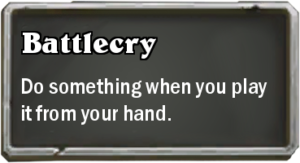
Effects are what the cards actually do, such as dealing damage, destroying minions, etc. Some effects can appear to not be gated behind conditions other than having the card due to how or when its triggers activate (Prince Malchezaar), but a key characteristic of effects is that they are always, always out behind some requirement. You can recognize conditions by the fact that they can be interacted with, while an effect will always go off when the requirement is met. The most confusing case is when auras are concerned because it might appear that the effect is freely available while it is in fact dependent on the aura persisting. Auras can be self-applied as well, such as the Taunt status.
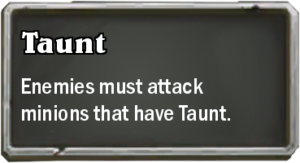
For a full breakdown of what mechanics are, you can head on over to the Hearthstone Gamepedia section regarding abilities. In this introductory article we will only look at mechanics that have been keyworded so far, excluding Mega-Windfury because it’s not found on a collectible card and substituting it with “Elusive”, which is the “Can’t be targeted by spells or hero powers” ability.
The Hearthstorm Scale
Author’s Ratings
In this section I’m going to give my opinion on where each of the 24 currently keyworded mechanics falls on the scale with a brief explanation why. In the next part of this project we will take a look at every single mechanic in the game and rate it, as well as do a much more detailed walk-through of these same 24 abilities and see if anything changes. One of the biggest difficulties is distinguishing level 1 and level 2 mechanics. Being evergreen is not always a great point of comparison because even among those, some are more complex or problematic than others, such as Charge (huge problem for the game, historically). The best way to identify Level 1 mechanics is that they appear on cards from the Basic set where others, equally widespread and part of every other set, do not, including entire class identities like Choose One and Combo.
For now, here are the first:
- Adapt (5) – A very recent addition to the keywords, this mechanic can be considered parasitic because (so far) it appears only on Un’Goro cards and it did require a lot of support – mainly, enough cards to get its own keyword. There is also the additional mechanical complexity that goes along with it in that you have to know what adaptations are available, that unlike Kazakus’ custom potion the same choices can appear again in consecutive triggers of the same effect and in that there is extra work required from the player (actually selecting the adaptations). These two factors are somewhat mitigated by the mechanic being fairly popular among players, yet it’s still enough to push it above level 4.
- Battlecry (1) – Easiest rating in the world. The OG condition, the easiest implementation, the very introduction to mechanics in the game. If we have to restrict a single mechanic to Level 1 it would be Battlecry as it embodies the simplicity and comprehensibility that all other mechanics strive for.
- Charge (4) – This mechanic is relatively simple to understand and use and is core to Hearthstone’s gameplay, however it has proven to be a balance nightmare for the developers, even going as far as stating that Stonetusk Boar is the card that’s limiting design space the most. While that’s very detrimental to its rating, the overall ease-of-use and the fact that it’s not strongly disliked by most players keep it in the middle of the pack.
- Choose One, Combo, Overload, Secret (2) – For all of those we apply the same criteria because they share a lot in common. While they couldn’t be more different in what they do if they tried, they actually serve very similar goals – they are class-specific mechanics that are considered that class’ unique identity in the game (secrets being available to 3 classes, of course), they are part of every single expansion and (with a minor exception) all adventures but they cannot be found on basic cards.
- Counter (7) – Featured only on the card Counterspell, this is the only way to prevent a cast spell from resolving. Being such a unique and powerful interaction, it often feels like cheating and the mechanic is very unpopular for it, causing more moments of frustration for having to play around it while
- Deathrattle (1) – I’m breaking my own rule here and putting it at level one even though it cannot be found on cards from the Basic set. The reason for this is that this is the other “OG” condition, the counterpart to Battlecry, the second most used condition in the game. Deathrattle is, for all intents and purposes, integral to Hearthstone and it simply can’t not go in Level 1. What really pushes it is that it’s the most simple mechanic to use in the entire game. Once the deathrattle card is played, there is no further action required of the player in order for the condition to trigger other than continuing to play the game as they normally would.
- Discover (2) – A relatively late addition to the game with the League of Explorers adventure set, Discover quickly because one of the most popular and beloved mechanics in Hearthstone. The overwhelmingly positive response from the community pushed it to an apparent evergreen status and it has been featured in every expansion since then. What’s keeping it from reaching Level 1 status is its mechanical complexity – it’s not as straightforward as other, simpler abilities and while it seems there is plenty of design space, it has proven it can bring problems with it when the discover pool has been made too narrow.
- Divine Shield (2) – Another classic and very simple mechanic that has been with Hearthstone since the beginning. The biggest reason that it’s not featured at level 1 is that with the exception of a single Paladin spell, it’s not featured on basic cards. Another small quirk that drags it down a level is that it has an unintuitive interaction with freezing effects where minions with divine shield will get frozen even if the shield absorbs the damage, for instance when hit by Blizzard.
- Elusive (3) – The main reason for this rating is that it’s very hard to make distinctive, interesting and meaningful cards that feature this ability. It’s slightly non-interactive but is penalised with (generally) subpar stats for it and AoE gets around it easily. There isn’t a lot of design space to go along elusive cards other than combining it with other keywords that already interact on the same axis, like Taunt (as seen on Soggoth the Slitherer).
- Enrage (3) – This keyword suffers from the same problems Elusive has. Featured mostly in the Classic set and briefly brought back during Old Gods, it has proven difficult for the developers to find design space to make distinctive cards with this ability. Generally it’s one of the least problematic effects in the game, however it doesn’t give enough identity neither to Warrior nor to its pool of neutral class to warrant return until it makes thematic sense. A more widely used and more interesting mechanic is the “upgraded” version – “Whenever this minion takes damage”, however that’s a separate non-keyworded (yet) mechanic that behaves in slightly different ways.
- Freeze (4) – The lack of interactivity of freeze effects makes them a huge point of frustration for a lot of players, especially when applied on a mass scale. It’s incredible unpopularity and potential to create problematic designs warrants a solid spot at this level.
- Immune (2) – While it seems very powerful, we should take note that immunity always lasts until end of turn, making the effect temporary and thus actually surprisingly easy to design new cards that feature it. A source of permanent immunity would definitely score so low on the scale.
- Inspire (7) – While relatively simple in what it does and easy to use, this mechanic is extremely parasitic and is by far the most disliked by the playerbase. In fact it’s so unpopular, that it’s the main reason why it is where it is. That being said, it’s not impossible to see it again if we were ever to return to the grounds of the Argent Tournament.
- Lifesteal (3) – This mechanic is rarely seen but in theory it should be relatively easy to make new cards with it and it seems fairly well liked by the players. We have only had a handful of minions with it until now but a whole Lifesteal-themed expansion is on its way so we will know more about this ability and how to evaluate it in the future.
- Poisonous (2) – Surprising amount of design space has been revealed in the most recent expansion and the mechanic doesn’t seem to have anything that would impede further reprinting whenever it makes sense. While not very widely played, it has gotten a mostly positive reaction by the players which keeps it at a low spot on the scale.
- Quest (5) – Un’Goro introduced the first legendary spells known as Quests. While originally called “a new card type” by Ben Brode in the intro video for Un’Goro, we now know that while Quests have a few peculiarities that makes them special, they are in fact normal spells for all intents and purposes and are not a completely new card type, unlike the up and coming Hero Cards from Knights of the Frozen Throne. While Quests offer plenty of design space, it has to be carefully explored because even the slightest mistake in tuning the requirements or the reward can render a Quest anywhere between bad and great. This mechanic is hard to balance and is also thematically tied to Un’Goro’s theme at the moment, which means we are unlikely to see it soon.
- Silence (5) – Once again, a mechanic that has been historically problematic. In the build up to the Standard format, neutral forms of silence were nerfed because it is, at its core, an unfun mechanic that’s not very popular among the playerbase. That’s not the case in Priest however, for whom silence has become a supplementary identity for the class. Silence is a very powerful effect because it trumps all conditions that do not activate the effect behind them immediately and can be used to deal with most problems in the game.
- Stealth (4) – Much like Freeze, Stealth effects are detrimental to the fun aspect of the game with the lack of interaction that they promote. Another historically problematic mechanic, Stealth has been causing headaches for designers because it limits a lot what they can do and has even gone as far as being actively pushed out of Standard through a forced rotation – Conceal was inducted into the Hall of Fame for good reasons.
- Spell Damage (2) – This is one mechanic that’s always there, in almost every set, however it’s not quite as fundamental to the game as others to warrant a level 1 status. It can be fit into almost every theme and is a huge hit with the community, however it has the potential to cause minor problems when easily stacked, especially in classes such as Mage, Rogue and Druid.
- Taunt (1) – Another classic. Taunt is THE fundamental effect in the game and has been featured on more cards athan any other single ability in the game. It doesn’t need much more than that said, honestly.
- Windfury (3) – For such a basic ability to get such a high rating, I have to explain what’s going on here. It’s not very intuitive to attack more than once in Hearthstone and since almost the entire game is geared toward minion combat, there are a plethora of ways to empower attacking, which is abusable by Windfury. The mechanic is relatively simple and there aren’t too many distinct cards the designers can make with it as we’ve seen in recent sets with the “common expensive windfury minion with slightly different stats every time”, while it’s simultaneously primed to become very problematic with the slightest slip up. That’s why it can’t go in levels 1 and 2 but it also hasn’t proven to be an issue and can’t be sent to level 4.
Community Ratings
If you want to help develop the Hearthstorm Scale, you can participate in this poll about player satisfaction with the currently keyworded mechanics. If we manage to get enough statistically significant responses, we will do another poll that lets you vote for every single mechanic (keyworded or otherwise) and place it directly where you think it should be on the scale.
Future Development
We have to keep in mind the important caveats that we started with and first among them – “the scale is in flux”. As Hearthstone continues to grow, expand and get more complicated, we will discover new things about the game, it’s mechanics and how everything ties together. It is often said that games, once created, tend to live a life on their own and even their developers find themselves joining the players along for the ride, except often that happens months ahead. The process of refining the scale and placing mechanics accurately on it is one of constant learning and reevaluating.
When we come back to this topic next time we will feature “official” ratings by Hearthstone’s designers and the man himself – game director Ben Brode. We will also take a comprehensive look at other, non-keyworded interactions, and rate all of those as well. Until then, you can help us do market research by participating in the poll above and leaving your thoughts down below. Follow @HSTopDecks for further updates on the topic and all the news around the up and coming expansion Knights of the Frozen Throne!


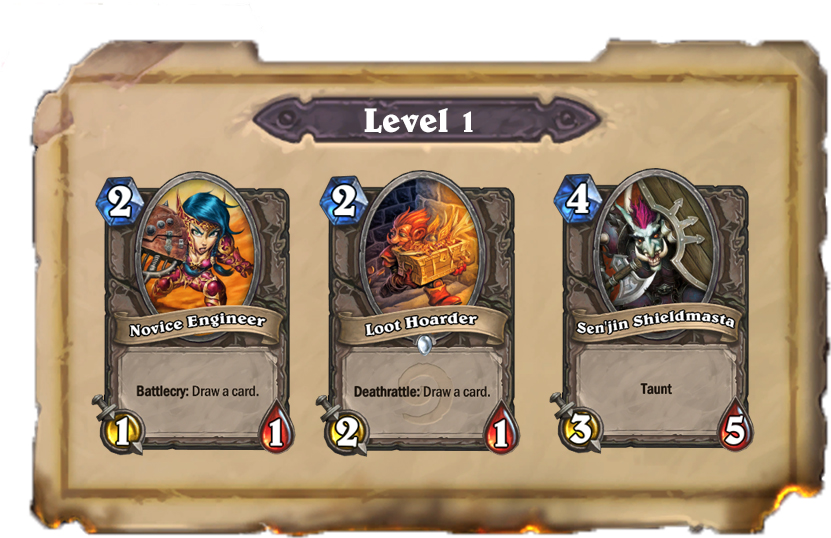
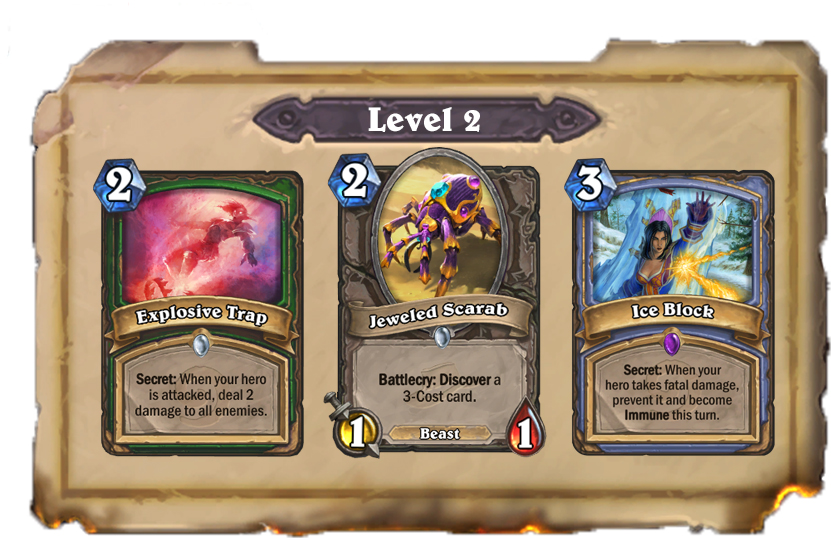
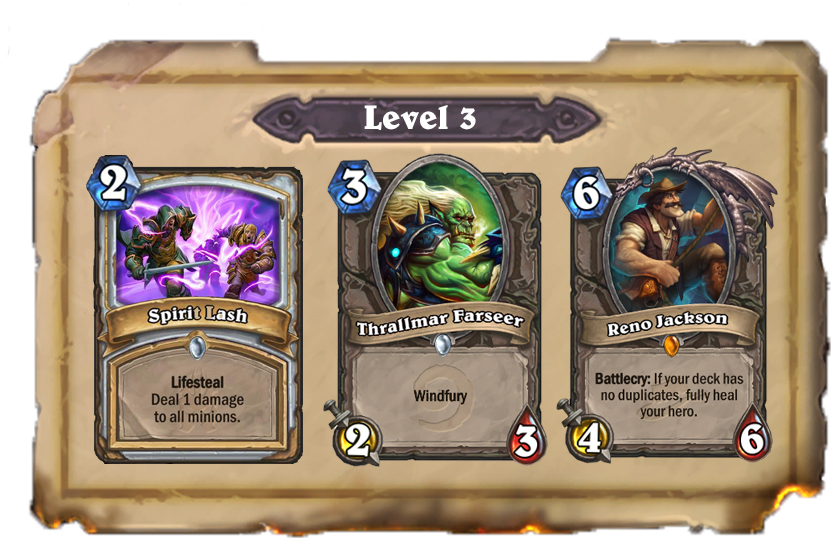
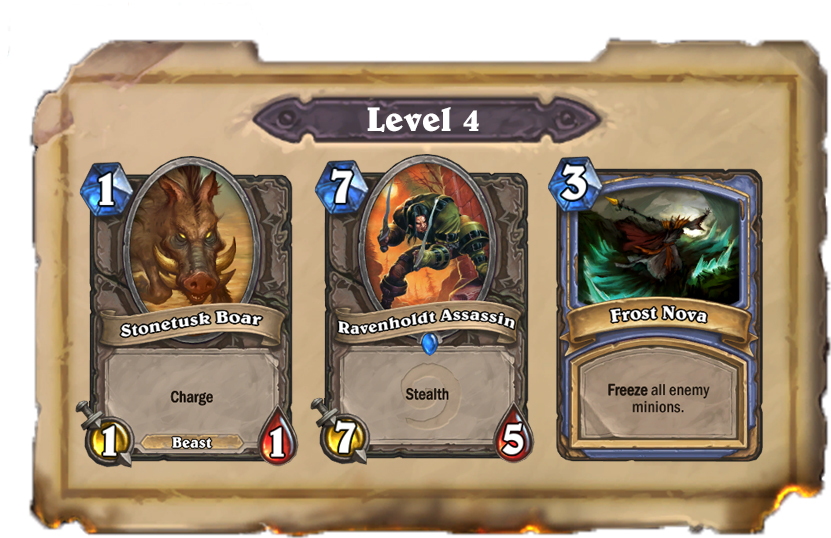
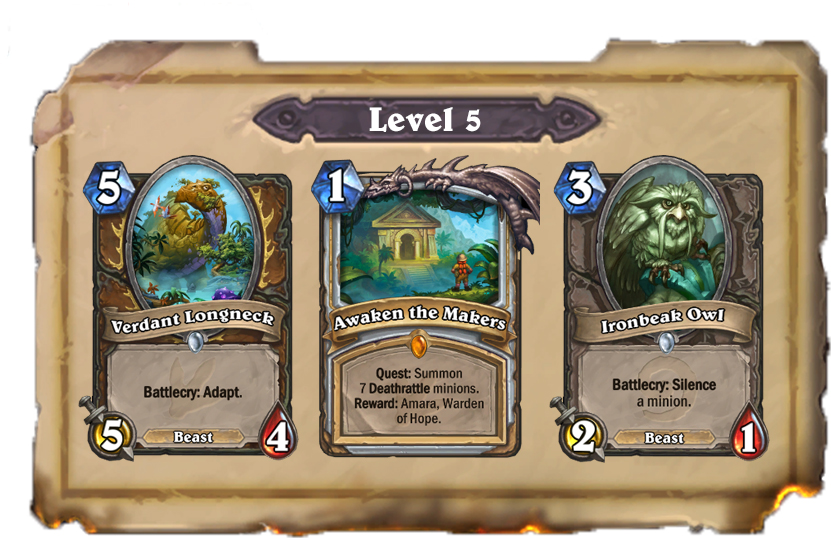
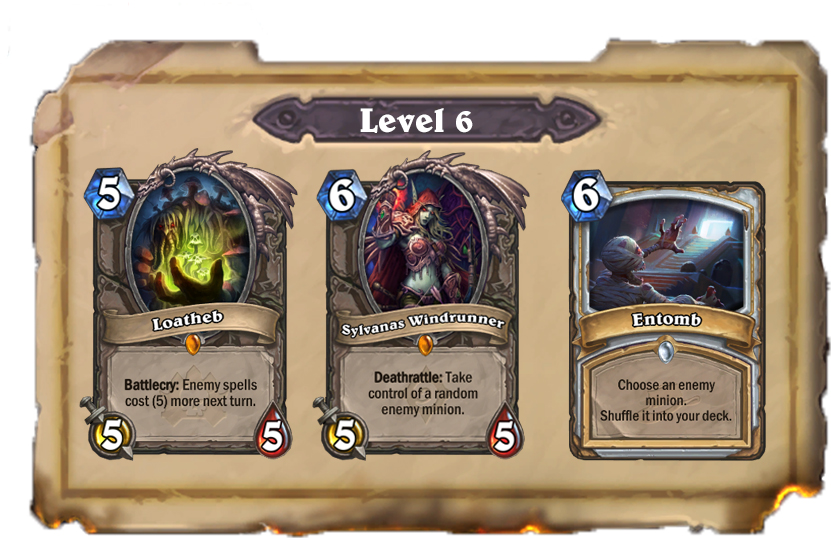
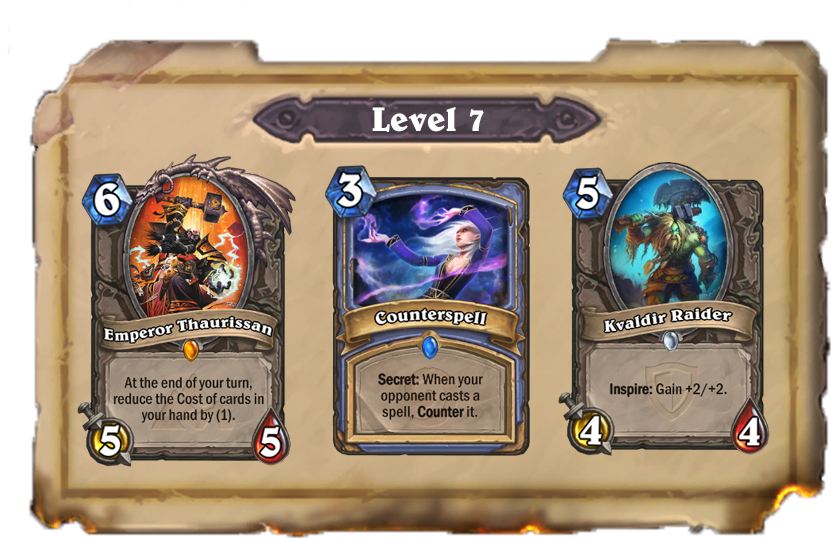
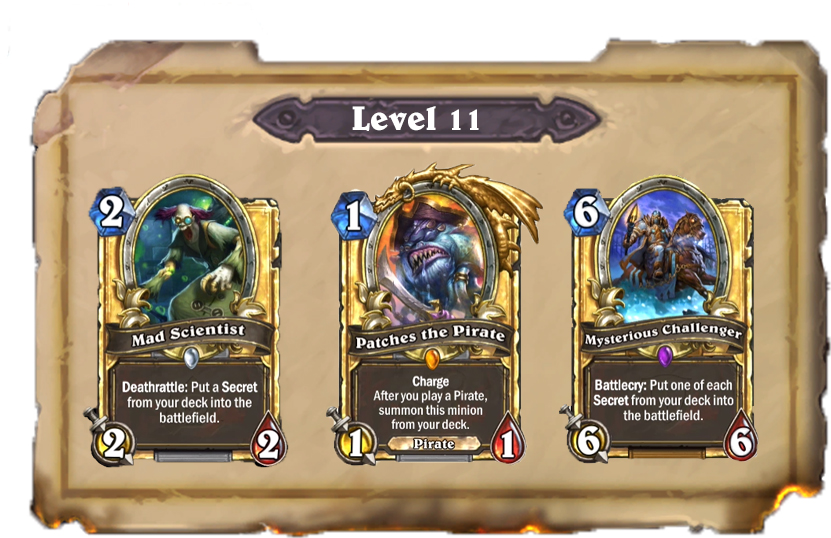


Lovely article, very informative and interesting read! Also, beautiful job on the visuals with the cards, really polishes the overall experience.
The new hunter card seems like a level 7. 4 mana but you would generally play it turn 6 with a secret then you get a free 2 mana secret.
sorry level 11*
It seems very strong indeed… but given that it requires “an activator”, we’ll have to wait and see. Interesting though, this is the first Hunter legendary that I can think of that’s not a beast.
When discussing the mechanics of RNGstone, how can we not discuss randomness?!
Great article!
Thank you very much, look out for updates and Part 2 someday.
Very nice article, you really did a great job, its visible the amount of work you have done right here!
I wish we could see more Quest and Hero cards as possible. They are so fun, even when they are bad cards. Maybe in the third exp of this year they will present another “card type”.
Funnily enough, I always thought the fourth card type they would introduce would be Hearthstone’s version of “Enchantment” from Magic: the Gathering – something like a permanent spell with an ongoing effect. To me it seems like they have dipped their toes a little bit in that space with Lock and Load, Embrace the Shadows, Stampede… can’t think of another one off the top of my head.
But hey, Hero Cards look really promising too! I sort of hope there is some interaction to go along with them, or at least in the future. Then on the other hand, I wish there isn’t any, because that would take away from their uniques and we can’t bank on them to be reliable, which is crucial for something that’s essentially a deck’s win condition. Overall, mixed feelings but very excited for the new toys.